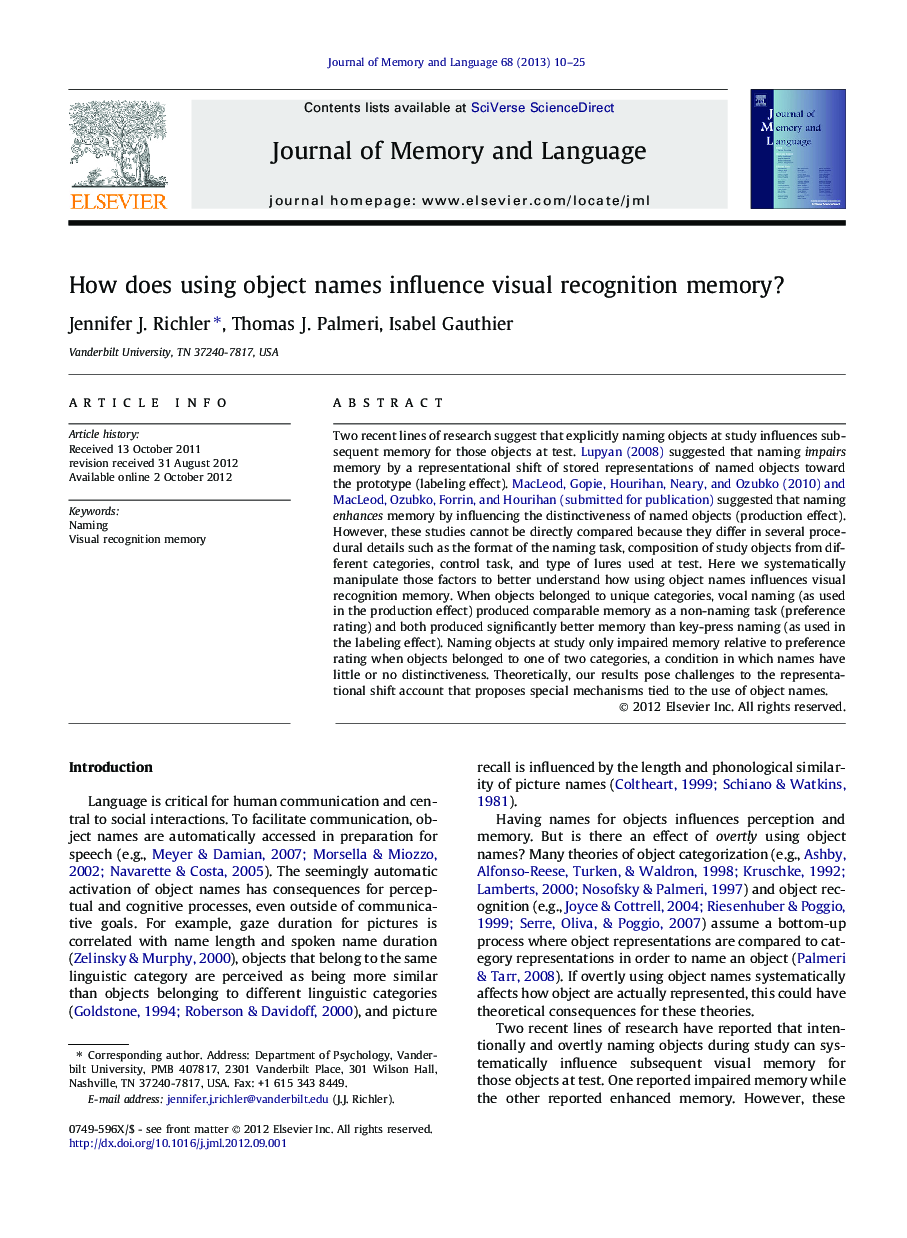| Article ID | Journal | Published Year | Pages | File Type |
|---|---|---|---|---|
| 931916 | Journal of Memory and Language | 2013 | 16 Pages |
Two recent lines of research suggest that explicitly naming objects at study influences subsequent memory for those objects at test. Lupyan (2008) suggested that naming impairs memory by a representational shift of stored representations of named objects toward the prototype (labeling effect). MacLeod et al., 2010 and MacLeod et al., submitted for publication suggested that naming enhances memory by influencing the distinctiveness of named objects (production effect). However, these studies cannot be directly compared because they differ in several procedural details such as the format of the naming task, composition of study objects from different categories, control task, and type of lures used at test. Here we systematically manipulate those factors to better understand how using object names influences visual recognition memory. When objects belonged to unique categories, vocal naming (as used in the production effect) produced comparable memory as a non-naming task (preference rating) and both produced significantly better memory than key-press naming (as used in the labeling effect). Naming objects at study only impaired memory relative to preference rating when objects belonged to one of two categories, a condition in which names have little or no distinctiveness. Theoretically, our results pose challenges to the representational shift account that proposes special mechanisms tied to the use of object names.
► Naming objects has been shown to both impair and enhance visual recognition memory. ► We systematically compare the two paradigms that lead to these different effects. ► Results are inconsistent with a representational shift account of naming effects. ► Results are consistent with a distinctiveness account of naming effects.
